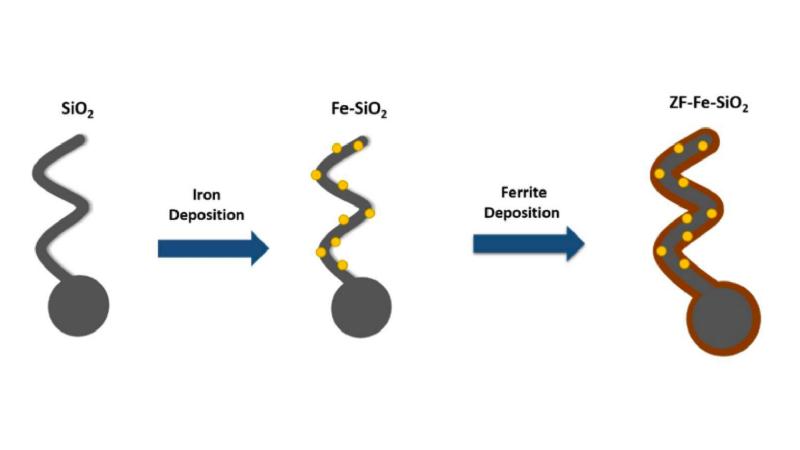
Advances in the field of nanotechnology – the science that deals with structures whose sizes are a few nanometers (a billionth of a meter) – have proliferated into many areas of science, including biology and medicine. Scientists across the world are looking at ways in which these tiny systems can help improve disease diagnosis, detection and drug delivery. In an interdisciplinary study, researchers from the Indian Institute of Science (IISc), Bengaluru, have demonstrated the integration of therapeutic modalities to “magnetic nanomotors”, which may be of significance in cancer therapy.
Nanomotors are nanosystems capable of motion through an external force; magnetic field in the case of magnetic nanomotors. They have the potential to be steered and localized within the human body. “There is tremendous current interest to use nanomotors for targeted therapeutics and the present work is a major step in this direction”, says Prof. Ambarish Ghosh, from Centre for Nano Science and Engineering, IISc, who spearheaded this study.
Recent studies have explored the possibilities of using magnetic nanomotors for various biomedical applications because they can be maneuvered inside the body remotely, and also because these motors need no chemicals to move. In a previous study, Prof. Ghosh, Dr. Lekshmy, and their group had reported the first successful voyage of these magnetic nanomotors in human blood. In general, the magnetic nanomotors tend to form agglomerates due to magnetic attraction, which severely limits their applications. In the present study, researchers have circumvented this problem by providing a ferrite layer on the magnetic nanomotors, which renders these nanomotors stable against agglomeration, making it possible to store them in a suspension for more than six months.
But how do these nanomotors kill cancerous tumours? It is through a phenomenon called ‘magnetic hyperthermia’ where application of high frequency magnetic fields increases the temperature of the nanomotor, which could kill cancer cells. “This is the first demonstration of integration of hyperthermia potential to nanomotors,” explains Dr. Pooyath Lekshmy Venugopalan, a research associate in Prof. Ghosh’s lab, who led the experiments.
The hyperthermia potential of the zinc ferrite coated nanomotors was demonstrated on cervical cancer cells – HeLa cells. The nanomotors showed an increase in temperature over time when subjected to high frequency alternating magnetic fields. This rate of increase was greater for higher magnetic field strengths. “The observed rise was enough to reach cell death temperatures, of around 43oC, within 20 minutes,” says Venugopalan, adding “this means that the heat generated was enough to cause cell death in cancer cells.”
These magnetic nanomotors are helical in structure and are made of silica (SiO2). Over the helical structure, a layer of magnetic material (here, iron) is deposited. This makes the nanomotors magnetic in nature. These iron-coated helical structures are then coated with a 150 nanometer thick layer of zinc ferrite.
The application of a single ferrite coating allows researchers to achieve a dense, stable suspension of magnetic nanomotors, which would otherwise agglomerate and become unusable. It also provides a therapeutic potential to these nanomotors. “The two functionalities are interrelated since for higher therapeutic value, a denser suspension is necessary,” explains Prof. Ghosh.
This interesting research demonstrates a single step method to fabricate magnetic nanomotors in a scalable manner that are highly stable and also provide therapeutic potential via magnetic hyperthermia which could have implications in cancer therapeutics. The researchers are now working towards improving the heating efficiency of these nanomotors, as well as methods to attach drugs to these nanomotors to carry out in vivo experiments. Their experiments are being carried out in close collaboration with biologists and doctors.






